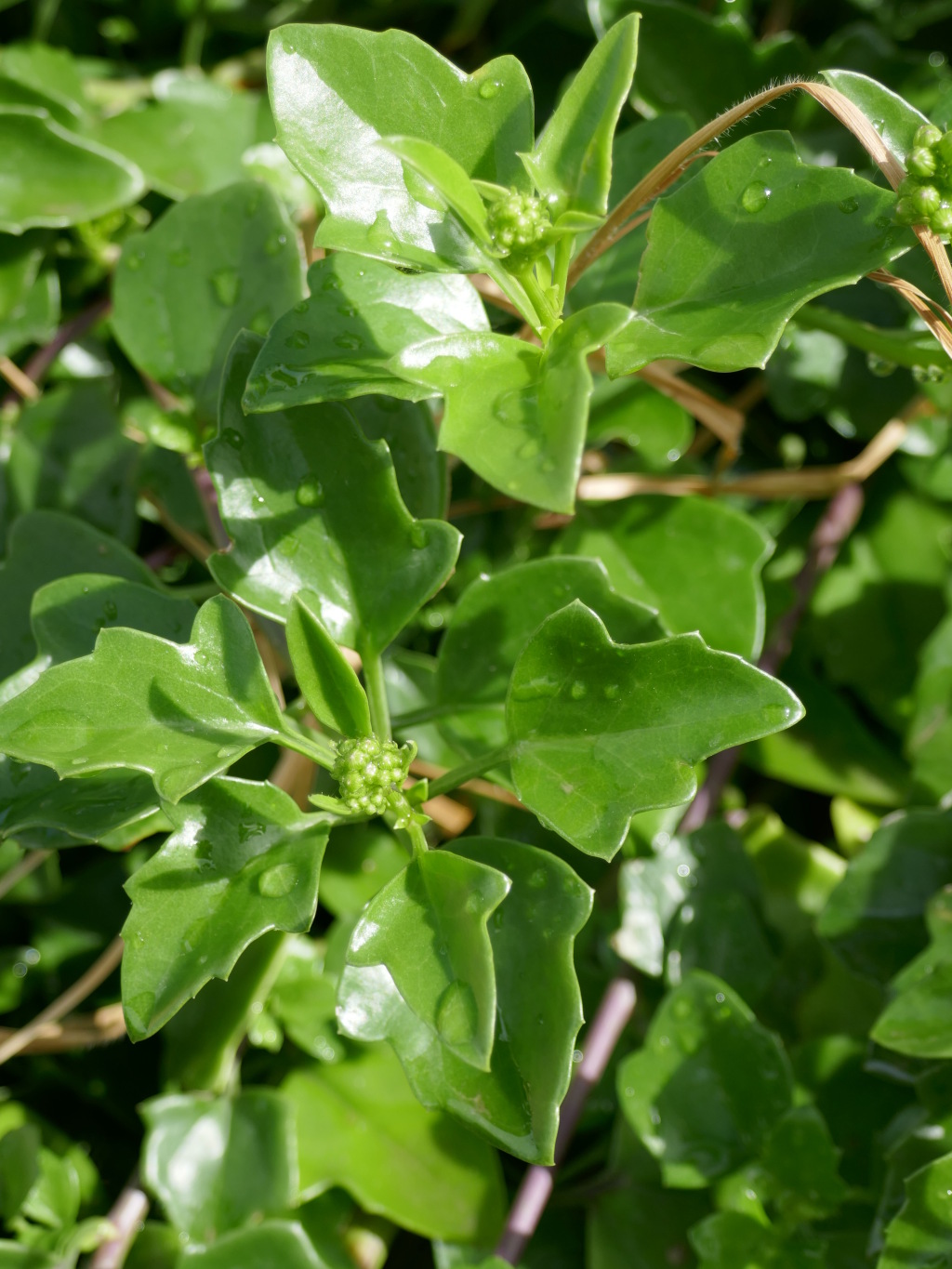Senecio angulatus
L.f.Glabrous, scrambling or semi-scandent perennial to c. 5 m high. Leaves rhombic, broadly trullate or ovate, 3–5 cm long, 1–5 cm wide, rather fleshy, few-toothed to shallowly lobed, rarely quite entire; petiole c. 1–4 cm long. Inflorescence a terminal corymbose panicle mostly 4–8 cm diam.; capitula radiate; involucre c. urn-shaped, 5–7 mm long; bracts 7–9; bracteoles present. Ray florets 4–6, yellow, ligules 6–9 mm long; disc florets 10–15. Cypselas 2–2.5 mm long, pale brown, with scattered short erect hairs; pappus of slender white hairs 6–7 mm long, deciduous. Flowers May–Jul.
GleP, VVP, GipP, OtP, CVU, EGL, HSF, OtR, Strz. Also naturalised WA, SA, Qld, NSW, Tas. Native to South Africa. Mostly established in near-coastal areas (e.g. Breamlea, Mornington Peninsula, Phillip Island, Point Hicks) where growing on foredunes or in hinterland, sometimes forming thickets to 20 m diam. or more, but also near settlements away from coasts (e.g. Melbourne suburbs, Morwell) where an escape from cultivation.
Walsh, N.G. (1999). Senecio. In: Walsh, N.G.; Entwisle, T.J., Flora of Victoria Vol. 4, Cornaceae to Asteraceae, pp. 941–965. Inkata Press, Melbourne.
 Spinning
Spinning




